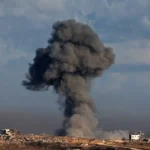New Delhi: The national capital experienced its coldest October night in two years on Saturday, with the mercury dipping to 15.8 degrees Celsius, even as the city’s air quality deteriorated to the ‘very poor’ category, according to the India Meteorological Department (IMD) and the Central Pollution Control Board (CPCB).

The minimum temperature recorded was 1.4 degrees below normal for this time of the year and the lowest since October 2023, when it had settled at 15.9°C. The maximum temperature hovered around 30°C on Saturday, with morning humidity recorded at 66 percent at 8:30 a.m., the IMD said in its latest bulletin.
However, despite the dip in temperature bringing early winter chills, the city’s air quality worsened significantly. The Air Quality Index (AQI) reached an average of 324, falling into the ‘very poor’ category, compared to 292 a day earlier. Some parts of the city witnessed even more alarming readings — Anand Vihar recorded an AQI of 429, followed by Wazirpur at 400, indicating severe pollution levels in localized pockets.
Environmental experts attributed the pollution spike to stagnant air movement, post-harvest stubble burning in neighboring states, vehicular emissions, and early onset of cooler air trapping pollutants near the surface. “The lower temperatures and calm winds reduce the dispersion of pollutants, leading to an immediate deterioration of air quality,” a senior CPCB official said.
In response, the Delhi government has planned an artificial rain or cloud seeding operation next week to help suppress dust and smog. The IMD has forecast light rain or drizzle on October 27 and 28, which could bring temporary relief to residents struggling with poor visibility and inhalation hazards.
The Early Warning System for Delhi suggests that the ‘very poor’ air quality stage is likely to persist for the next 48 hours before conditions slightly improve due to wind activity from the northwest. Health experts have urged citizens, especially children and the elderly, to limit outdoor activities and wear N-95 masks when stepping outside.
Authorities continue to monitor the situation closely as winter approaches — a period known for Delhi’s worst pollution episodes annually due to temperature inversions and seasonal crop residue burning across the Indo-Gangetic plains.







